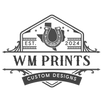Welcome to the exciting world of 3D printing! Whether you're a hobbyist, an artist, or a professional looking to prototype your designs, 3D printing offers endless possibilities. In this guide, we'll walk you through the steps to get you started on your 3D printing journey. For more tools and resources, be sure to visit WM Prints.
Step 1: Understand the Basics
Before you dive into buying a 3D printer, it's important to understand the technology behind it. 3D printing, or additive manufacturing, is a process of creating three-dimensional objects from a digital file. This involves layer upon layer of material, such as plastic or resin, being deposited to form the final object.
Step 2: Choosing Your 3D Printer
There are a variety of 3D printers available, each suited for different needs and materials. Some popular types include Fused Deposition Modeling (FDM), Stereolithography (SLA), and Selective Laser Sintering (SLS). Consider what you plan to create, your budget, and the printer's ease of use when making your decision.
Step 3: Gathering the Necessary Tools
Once you have chosen your 3D printer, you'll need some tools to accompany it. Tools can help you in various stages of the printing process, from setup to post-processing. For instance, consider getting tool holders for organizing your workspace efficiently. Check out the Lyman Type Prep Tools Holder to keep your tools neatly arranged and easily accessible while you work.
Step 4: Designing Your 3D Model
Creating a 3D model can be one of the most rewarding aspects of 3D printing. You can either design your own models using CAD software like TinkerCAD, Fusion 360, or Blender, or you can download pre-made models from online repositories like Thingiverse or MyMiniFactory.
Step 5: Preparing Your Model for Printing
Before printing, your model needs to be converted into a format that your 3D printer can read. This is done using slicing software, which divides your model into thin horizontal layers and translates the design into instructions for your printer. Common slicing software includes Cura and PrusaSlicer.
Step 6: Printing Your Model
With your printer set up and your model sliced, it's time to hit print! Follow the instructions specific to your printer model for loading material and starting the print job. Ensure safety by monitoring your printer during its first few layers to ensure everything is functioning properly.
Step 7: Post-Processing Your Print
After your print is complete, it may require some post-processing. This could include removing supports, sanding, or painting to achieve the final look you desire. Having a tool holder, like the Lyman Type Prep Tools Holder, can help you organize the tools needed for these finishing touches.
Conclusion
By following these steps, you'll be well on your way to creating amazing 3D prints. Remember, practice and patience are key to mastering the art of 3D printing. For more products and inspiration, visit WM Prints to explore a wide variety of accessories and materials that can help enhance your 3D printing endeavors.





